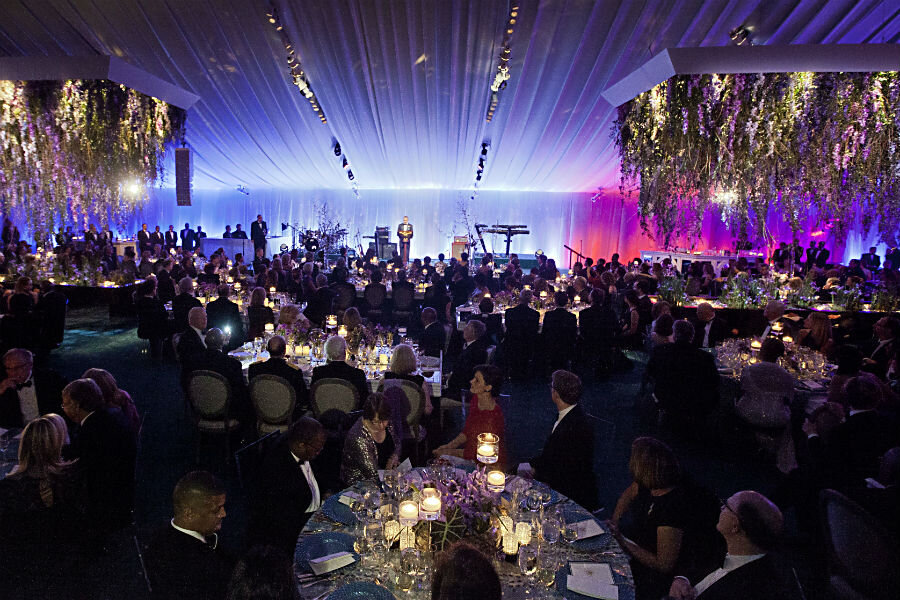Michelle Obama designs new White House china set
Loading...
| Washington
A hue of blue inspired by the waters of Hawaii is a prominent feature of the Obama state china service being unveiled by the White House.
President Barack Obama is a Hawaii native who returns every Christmas for vacation.
Michelle Obama's office says the first lady chose what's being called "Kailua Blue" to distinguish her family's china from the red, green, blue and yellow used on more recent state services.
A fluted band of Kailua Blue, framed by a textured gold rim and a simple gold inner line, appears on all pieces of the service, except the dinner and serving plates, according to a description provided by the White House. The solid white dinner plates are edged in gold; the service plates have a wide gold rim and the presidential coat of arms at the center.
The Obama state china service consists of 11-piece place settings for 320 people.
It was being unveiled Monday during a preview for Tuesday's state dinner for Japanese Prime Minister Shinzo Abe.
Obama has held the fewest number of state dinners since Harry S. Truman, who left office 62 years ago. In his first six years, Obama held just seven state dinners.
The Obama state china service was paid for with money from a private fund that is used to buy fine and decorative arts for the White House and is administered by the White House Historical Association. The cost was not disclosed.
Planning began in the fall of 2011 when Mrs. Obama and family friend and designer Michael Smith began gathering feedback from members of the White House residence staff.
Three years ago, in the spring of 2012, Pickard China, of Antioch, Illinois, was brought in to consult on the project. The company has made dinnerware for use at the Camp David presidential retreat in Maryland and aboard Air Force One.
Mrs. Obama wanted the state china service to have modern elements but also be practical, said the White House, which was unveiling it earlier than recent administrations.
Then-first ladies Laura Bush and Hillary Rodham Clinton were not around to use the state china services they introduced just weeks before their husbands left office.
Mrs. Bush chose a soft green pattern due to its versatility and ability to coordinate with flowers. The pattern was inspired by a dinner service belonging to President James Madison. Mrs. Clinton chose a china set with a border of pale, creamy yellow and images of the White House, instead of the customary presidential seal.
Obama has approximately 20 months left in his term, which ends on Jan. 20, 2017.
___
Follow Darlene Superville on Twitter: http://www.twitter.com/dsupervilleap
Copyright 2015 The Associated Press. All rights reserved. This material may not be published, broadcast, rewritten or redistributed.





